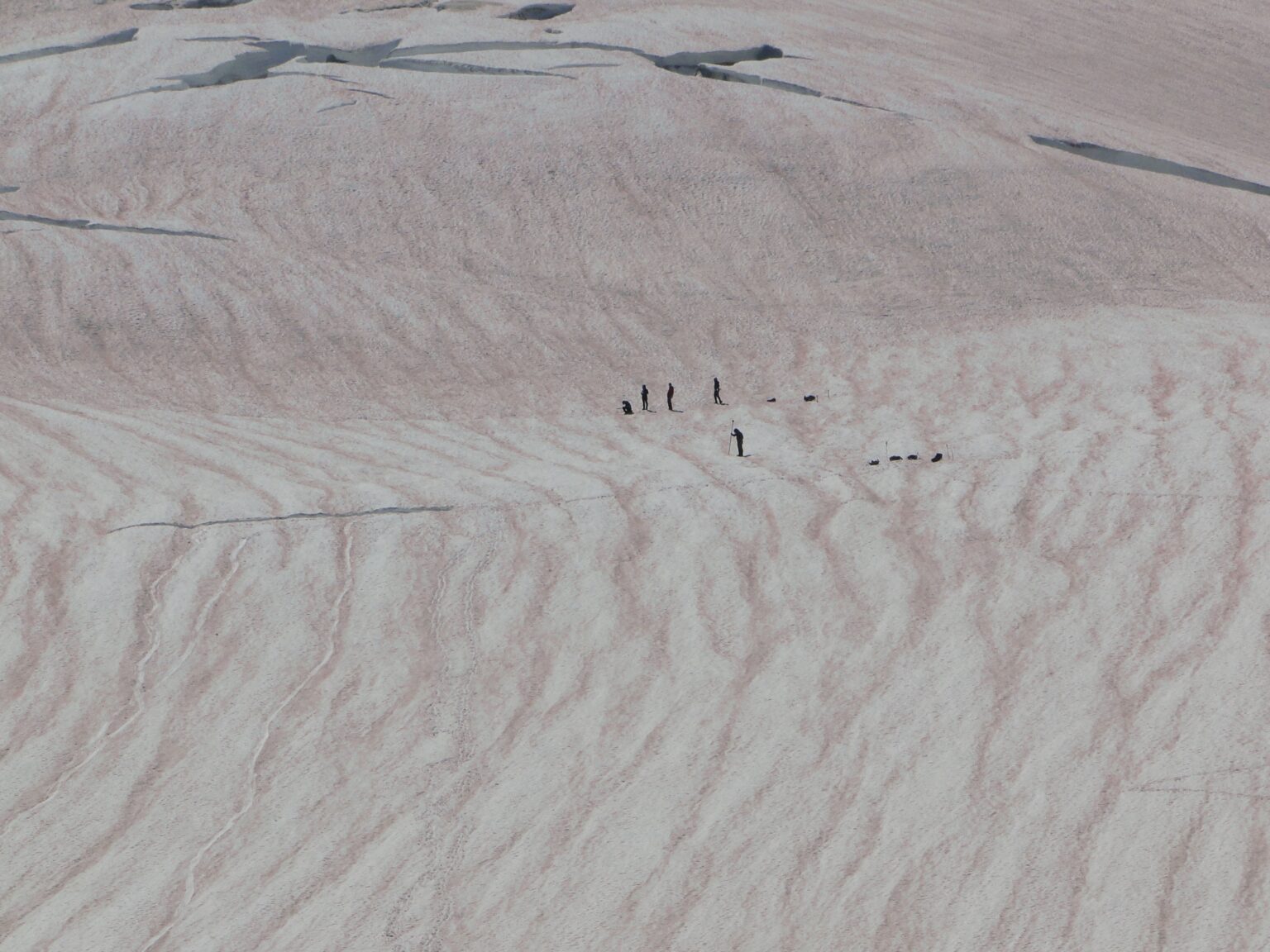A new report from a professor at Western Washington University has identified a way to map snow algae, and how that algae is speeding up snowmelt in the North Cascades.
The algae, once recorded by famed evolutionary biologist Charles Darwin, are everywhere, including in the mountains of the North Cascades and along the hills of Mount Baker. Over the last few years, Alia Khan, an assistant professor at Western, has made the trek to the nearby volcano with students to map algae and its impact on the region.
“We’re interested in understanding how these new algaes are impacting the seasonal snowmelt, and what that means for downstream water resources,” Khan said during a May 5 phone call. “Here we’re showing, for the first time, that snow algae do play a role in snowmelt.”
Understanding snowmelt in the North Cascades is vital for environmental planning and environmental health, as snowpack in the region plays a key role in the seasonal water cycle, according to the Environmental Protection Agency.
In Whatcom County, runoff from snow melt contributes to the Nooksack River and all the surrounding bodies of water, providing much-needed water for farming, irrigation, salmon habitat and daily consumption.
The timing and magnitude of snowmelt in the region can have drastic complications, especially for downstream ecosystems and salmon habitat along the Nooksack River. The faster the snow melts, the less water there is available for the region during the particularly hot and dry summer months.
In the North Cascades, Khan said, algae contribute to “albedo change,” in the snow, meaning the snow can’t reflect away light, heat or radiation as well as clean snow. That means the snow melts faster, Khan’s recent study found.
“The snowpack of the North Cascades has been declining as a result of climate change with the average spring snowpack projected to decrease by 38-46 [percent] by 2050,” according to the study. “Snow algae are likely contributing to this increased snowmelt by decreasing the albedo of the snow. Yet, they are not currently included in regional watershed melt models.”
Part of her recent research includes mapping snow algae across Mount Baker with “uncrewed aerial vehicles,” a new approach to regional environmental studies.
“Most of the studies in the past, they’re all mostly done by foot,” Khan said. “Now we’re able to fly an uncrewed aerial vehicle, which allows us to cover a larger area, and repeat it more frequently.”
Khan, who has been a professor at Western for five years, said she first stumbled across snow algae while studying black carbon — sooty black particles emitted by gas and diesel engines, wildfires, smoke and other fossil fuel burning facilities — in Antarctica about seven years ago.
“I began studying the impacts of snow algae in Antarctica and in the Pacific Northwest, here in the Cascades,” she said. “[Mount Baker] is a fantastic local laboratory to study this phenomenon. The access is great, and I’m able to easily bring my students and research group up there.”
Khan’s snow algae study, co-authored with her former student Shannon Healy, was published in Communications Earth & Environment on May 8.




